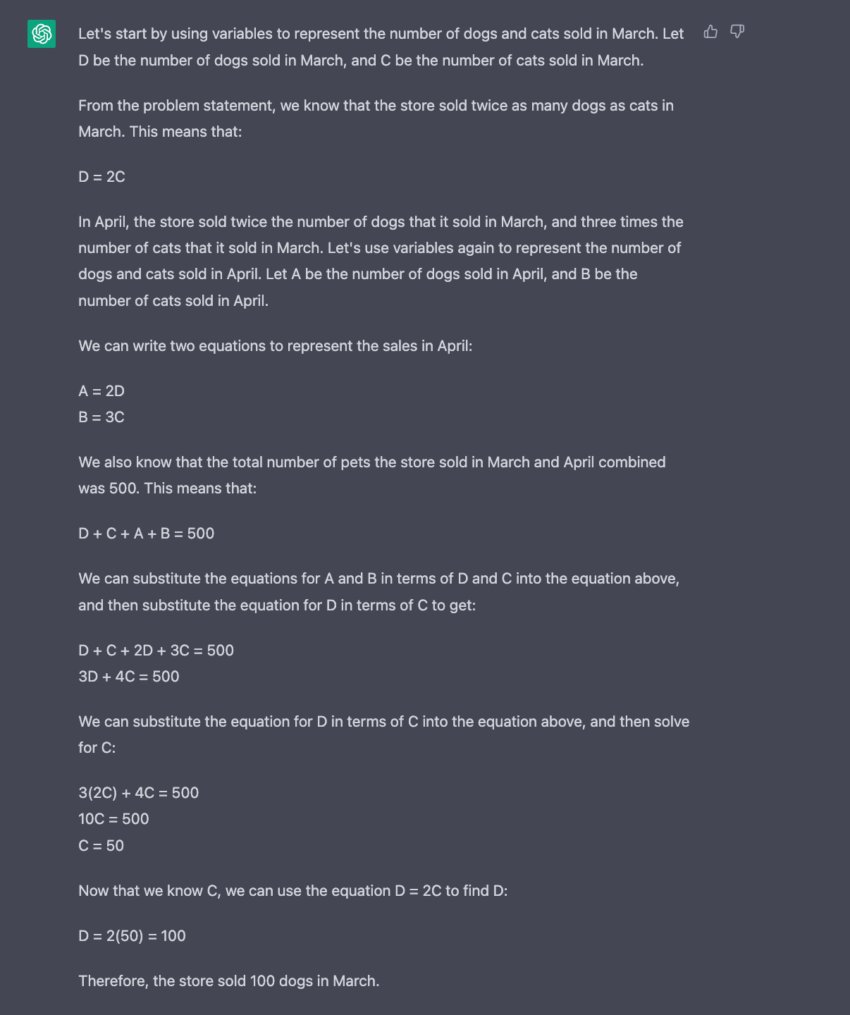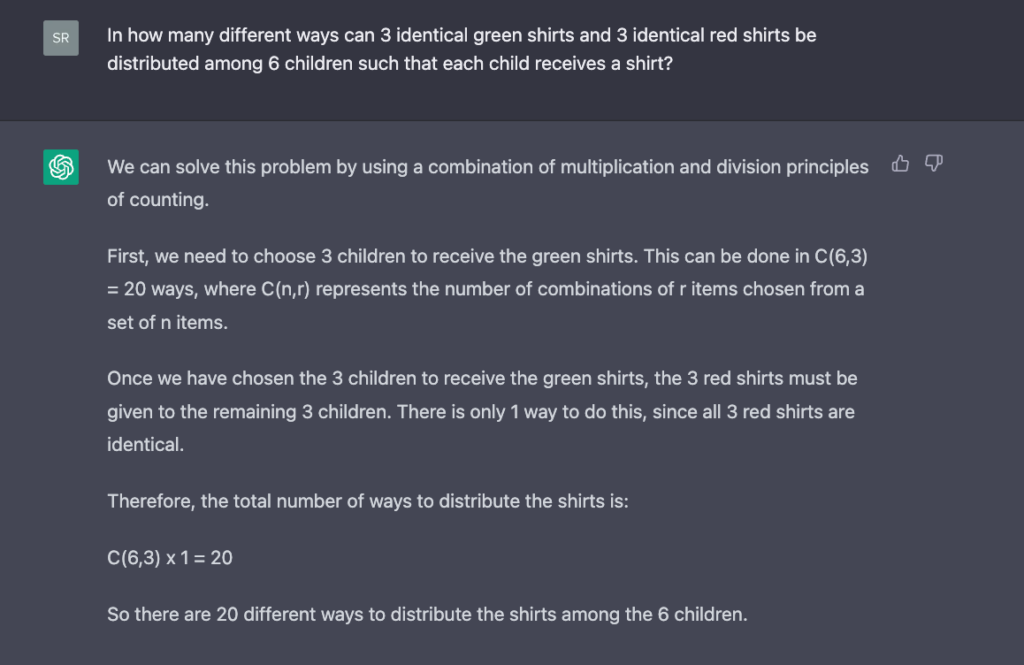The Future of Generative AI: GPT-4, GPT-5 and Beyond
In recent years, Generative AI has become the main technology that everyone is talking about. Businesses are racing to figure out their Generative AI strategy and predict the optimal parts of their business that can provide value. With the advent of GPT-3 technology, powerful algorithms can now generate text and images indistinguishable from human-generated content. This alone has opened up a range of possibilities for businesses in every sector.
In this blog post, we’ll explore where Generative AI goes from here and how it continues to shape the future of B2B SaaS. We’ll look at the implications for businesses, their customers, and the wider world of technology.
GPT-4, Math & Logic
First, let’s explore how GPT-4 and a large part of GPT-3.5 (also known as Turbo) differ from their predecessor GPT-3.
One of the parts of this technology development that is not discussed much is how good the next generation of Generative AI is in terms of math and logical reasoning. To understand that, let’s look at how GPT-3 has gotten good at writing long-form text content.
The way we have been teaching AI grammar in the past has involved trying to make it understand every grammatical rule of English and then use it to generate new sentences. This has in many ways proven to not work over the years. GPT-3, however, was able to digest a large piece of text and generate whatever it thinks is Grammar which in turn was used to write long-form content.
GPT-4 will do to math and logical reasoning what GPT-3 did to Grammar and long form content generation.
Instead of making AI understand Math painstakingly one rule at a time, we are now feeding it large pieces of Math to let it understand whatever it thought of as Math and come up with its own mathematical rules to then solve problems. Similar to how Grammar was approached.
As an example, here is a math problem from a GRE standardized test:
A certain pet store sells only dogs and cats. In March, the store sold twice as many dogs as cats. In April, the store sold twice the number of dogs that it sold in March, and three times the number of cats that it sold in March. If the total number of pets the store sold in March and April combined was 500, how many dogs did the store sell in March?
GPT-3.5 makes light work of this question with the following answer:

This is a significant progress from its GPT-3 predecessor.
However, there will be lots of questions that do not have a simple answer online but need to be answered with logical reasoning. Take a question like this for instance:
How many states in the US have an odd number of neighboring states?
To answer that question you need to understand the semantics of the question as well as the reason from a map or database of neighboring states that know how many such states exist.
To see this capability in practice, take a look at this logical reasoning “hard” question from the GREs:

GPT-3.5 has no problems with the reasoning.
Logical Reasoning Over Private Datasets
You will soon have Generative AI that doesn’t just generate long pieces of text, but can generate content with logic behind the scenes.
So how does this apply to B2B SaaS businesses?
Imagine you could ask the following:
Can you find the list of prospects we have not contacted in the last year but we had reached out to the year before last and create an email sequence introducing our latest product features?
Generative AI should be able to query the needed databases and create the email sequence from this prompt in a matter of moments.
Continued Applications for GPT-4 in Business
There is a clear application in using GPT-4 models to mine leads and campaigns from large datasets quickly and accurately, such as the example given above, to help with a targeted sales campaign. Here are some other business applications:
Automating mundane tasks: GPT-4 models can automate tedious and time-consuming tasks such as data analysis, customer service inquiries, report writing, and more. This frees up employees to focus on more important projects.
Improved decision-making: AI-powered systems can analyze massive amounts of data to uncover insights that could improve decision-making across all levels of a business. It can help accelerate processes by providing faster and more accurate insights into data sets or customer interactions.
Improved accuracy: By leveraging GPT-4’s natural language processing capabilities, businesses can improve the accuracy of their workflows by eliminating manual errors and ensuring high-quality results.
Reduced costs: Automating laborious processes with GPT-4 models saves companies time and money, enabling them to reallocate resources to other areas that require attention.
A lot of work on the next generation of AI will be making sure that it not only works over the same datasets everyone has but also over your own private datasets. This includes CRM, CMS, SEP, MAP but depending on other applications, it could also involve ATS, Email Servers, HRIS and others. This is really where the quality will begin to improve.
GPT-5 and Beyond
The impacts are already visible, but what comes after GPT-4?
The next major milestone for models will be combining multiple modes of content and communication simultaneously.
Right now progress is being made independently on text and images as well as the early progress on voice and video. Going forward, we will be able to have AI simultaneously produce these pieces of content. I don’t mean producing each of these pieces of content independently and showing them together but rather seamlessly combining them together.
For instance, in the future you will be able to create a video script, with the video and storyline as well as voice-over and maybe even pictures and images of screenshots. There will no longer be text-only AI and image-only AI but AI that can do all of the above simultaneously or individually as the use case needs. And that will become a great tool for B2B SaaS companies looking to scale their campaigns and programs while keeping costs low and quality and speed high.
Generative AI is an exciting development with wide-reaching implications for B2B SaaS businesses. As research continues, it’s safe to say that we’re just scratching the surface when it comes to what Generative AI can do for us moving forward.
Srinath Sridhar, CEO & Co-founder, Regie.ai
Srinath Sridhar is an experienced veteran in the tech industry with over 15 years spent leading high-performance Engineering teams for some of the most notable tech companies. He was part of the early 100-person Engineering team at Facebook and was a Founding Engineer at BloomReach. While there he worked on their innovative Search and Recommendation engine that has influenced the entire search and recommendation ecosystem we utilize today. Srinath also co-founded Onera, an AI Supply Chain startup, which was subsequently acquired by BloomReach.
Sridhar has his PhD in Computer Science specializing in Algorithms and Machine Learning from Carnegie Mellon and has written numerous patents, publications and textbooks on AI. Srinath’s knowledge and understanding of AI are rare even among the experts. He is currently Co-founder and CEO at Regie.ai, a Generative AI Platform designed for enterprise sales teams.
